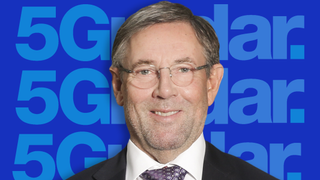In a world that is more reliant on bandwidth and digital services than ever before, CSPs (communication service providers) have played an integral role in underpinning our connectivity requirements. Despite this, CSPs are traversing a competitive and changing landscape, resulting in increased commoditisation challenges and stagnating revenues. As such, it means CSPs have an immediate need to reposition themselves or face the prospect of a difficult future.
The good news, however, is that CSPs are in a great position to do just that. They have immediate core strengths of being trusted by consumers, having established industry relationships, the infrastructure to deliver capabilities and a skilled B2B workforce. By taking advantage of openings generated by new and convergent technologies, CSPs have a unique opportunity to be the lynchpin for a wide range of services through their ability to connect a complex ecosystem of new digital offerings. From being the custodian of the smart home, to helping small businesses thrive post-pandemic or offering cloud-based ‘as-a-service’ solutions, CSPs can underpin all of this.
Key to this is the Large Enterprise market. With the development of networks towards software-defined 5G and the emergence of the edge to deploy key horizontal software capabilities, CSPs can deliver new and powerful industrial IoT use cases. These can deliver the personalisation and mission criticality that large enterprises need for their customers. With so much opportunity then, CSPs need to step up and consider the next steps in applying 5G and the edge to their services. So how can this be done? Here are three key steps:
1. Learning from 4G
There are many lessons CSPs must take from the development and deployment of 4G. Whether it was time, talent, capital or tech, each of these required significant investment. However, while OTT players cashed in on the increased connectivity 4G provided with a continued bull-run of subscribers and share price performance, CSPs saw little ROI.
This is because the real value in 4G came from the added-on services that it presented. With 5G, CSPs must take heed of history, and evolve their role from a wholesaler to an intelligent service orchestrator. This means leveraging 5G as that critical control point to not just provide enhanced connectivity services, but creating the ability for horizontal services and vertical solutions. It’s vital CSPs change their mindset, otherwise ROI will again be left wanting, leaving others to reap the rewards of 5G by delivering the innovative services on top that customers are looking for.
2. The 5G-edge connection
Where the real disruption will be seen in the CSP market is by fusing 5G and edge computing. For example, combining mobile edge networks with cloud services – versus remote and slower public cloud networks – data can be collected, analysed and actioned locally. This means the low-latency of 5G can live up to its true potential to deliver capabilities in real-time – a gamechanger in making business decisions more quickly. This is where partnerships with the tech giants will be needed, not to mention mutually beneficial. CSPs provide the connectivity, while the tech companies provide the edge solutions that are built for 5G.
3. Opening up the vertical markets
CSPs will also have the ability to drive new opportunities within vertical markets. Through APIs’ ability to onboard cross-industry use case supply chains on to horizontal edge platforms, CSPs can become a key player in the connected industries market.
To make this work, they must work again with ecosystem partners like the tech giants to drive continuous innovation within high-value industry services. With eSIMs gaining traction too, CSP have to show their worth and value or enterprises can easily switch to others that can.
APIs enable the ability to ultimately industrialise the onboarding, certification and orchestration of vertical use cases. This in turn leads to increased efficiency, productivity and in the end, revenue. Take smart manufacturing applications, for example. Computing is brought closer to the data, which drives data storage in equipment itself, in turn providing better predictive maintenance.
The cross-industry orchestrator
As each industry looks to increase their digital assets, CSPs are uniquely positioned to be the “cross-industry orchestrator”. This is because it requires the very specific carrier grade capabilities and assets they have built up over the years. At the same time, 5G, cloud and network modernisation is becoming an increasingly vital part of public strategy programmes globally – a hugely positive move for CSPs given their capabilities.
All this positivity though will be for nothing unless action is taken now. Focusing on just connectivity and wholesale in 5G or a re-seller approach to the edge will see CSPs continue to stagnate. CSPs need to evaluate their competition and really understand where they sit in the 5G ecosystem. They need to take advantage of their strengths and understand their competitors. No one player has the full gamut of end-to-end capabilities, so it’s vital CSPs pick the right partners. This will not only benefit them, by fuelling their growth, but boost the entire industry and wider society. Now is not the time for CSPs to rest on their laurels and assume this digital age will come to them. Now is the time to act and preserve their future for the long term as the key players in the market.

